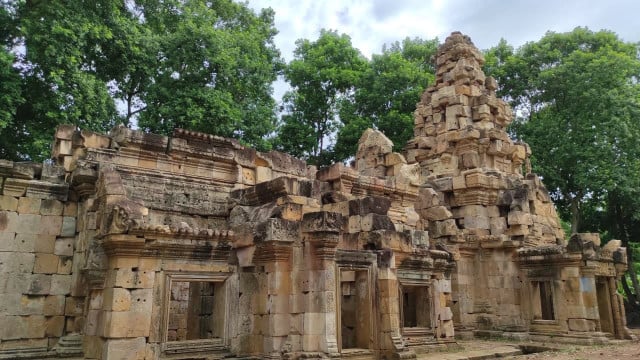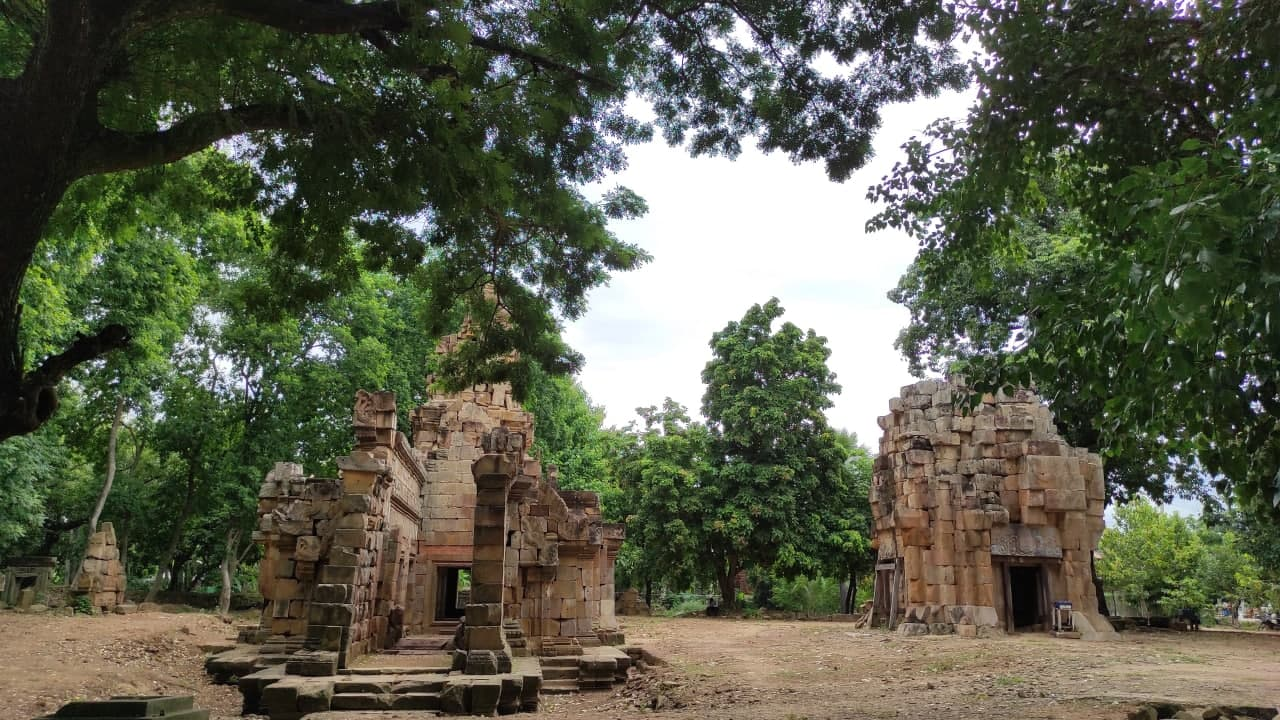The Basaet Temple: damaged over the centuries, rescued by Cambodian experts, and now standing in its peaceful setting

- By Nhem Chan
- April 8, 2023 7:27 AM
BATTAMBANG PROVINCE — Located to the southwest of Siem Reap province, Battambang province has a long history that is reflected in its centuries-old monuments and that, adding to other elements such as its signature cuisine, stories and legends, contribute to the color and taste of this province.
Built around 1,000 years ago, Prasat Basaet, or Basaet temple, reflects the fact that people have lived next to and cared for this temple throughout the centuries.
Standing in today’s Basaet village, in Sangke district’s Tapon commune, about 14 kilometers east of the Battambang Provincial Hall, this temple has become a tourist site and for many a shrine where they come to pray.
The temple fairly dominates the landscape with its two towers, the sculpted features on its door and door columns, and the stones scattered on its ground among large trees and greenery.
According to Kim Sophorn, deputy director of the Ministry of Culture and Fine Arts office in Battambang Province, the Basaet temple was built in the first part of the 11th century during the reign of King Suryavarman I and dedicated to the Hindu deity Shiva. A stone inscription in Sanskrit at the monument reveals that the original name of the temple was Chey Kset, or Victorious Land, which could be victory in war or even a good crop in agriculture. Later on, its name was changed to Basaet.
In addition to sculpted features on the temple’s lintels, door columns and corners of the walls, there are bas-reliefs featuring nagas and the story of the Churning of the Ocean of Milk from the Hindu mythology.
 Teams from the Ministry of Culture and Fine Arts conducted restoration work on the Basaet temple to preserve it for posterity. Photo: Nhem Chan
Teams from the Ministry of Culture and Fine Arts conducted restoration work on the Basaet temple to preserve it for posterity. Photo: Nhem Chan
As Sophorn explained, over the centuries, the temple was affected by nature and the elements, damaged in the course of armed conflicts and, in recent decades, by looters looking for artifacts to sell. Especially during the Khmer Rouge regime, he said, stones that were crucial for the stability as well as the beauty of the temple were taken out of their original places for various purposes. Fortunately, the Ministry of Culture and Fine Arts intervened and has conducted rescue, restoration and maintenance work on the temple, he said.
The central room of the temple once housed a Shiva lingam. Remnants of a statue of Nandi—the sacred bull that carries the Hindu deity Shiva on its back—can also be seen in the temple. Miniature temples were also used as decoration.
Excavation at Basaet temple has led to the discovery of 8th century statues as well as elements from the 13th century, which has raised a number of questions among archeologists as to the history and use of the temple.
In the course of the centuries, the temple seems to have often been left unattended with natural decay and, in recent decades, armed conflicts and looting taking their toll. The restoration work recently conducted by the Ministry of Culture and Fine Arts has proven crucial.
There remain, however, numerous stones whose original purpose and location could not be found, which has left experts wondering whether other portions of the temple remain to be discovered.
Before the COVID-19 pandemic, Basaet Temple was attracting a considerable number of visitors. As normalcy returns, the temple set among trees and greenery may again see people of all ages enjoy its peaceful setting.
Cheng Ousa contributed to the story.















